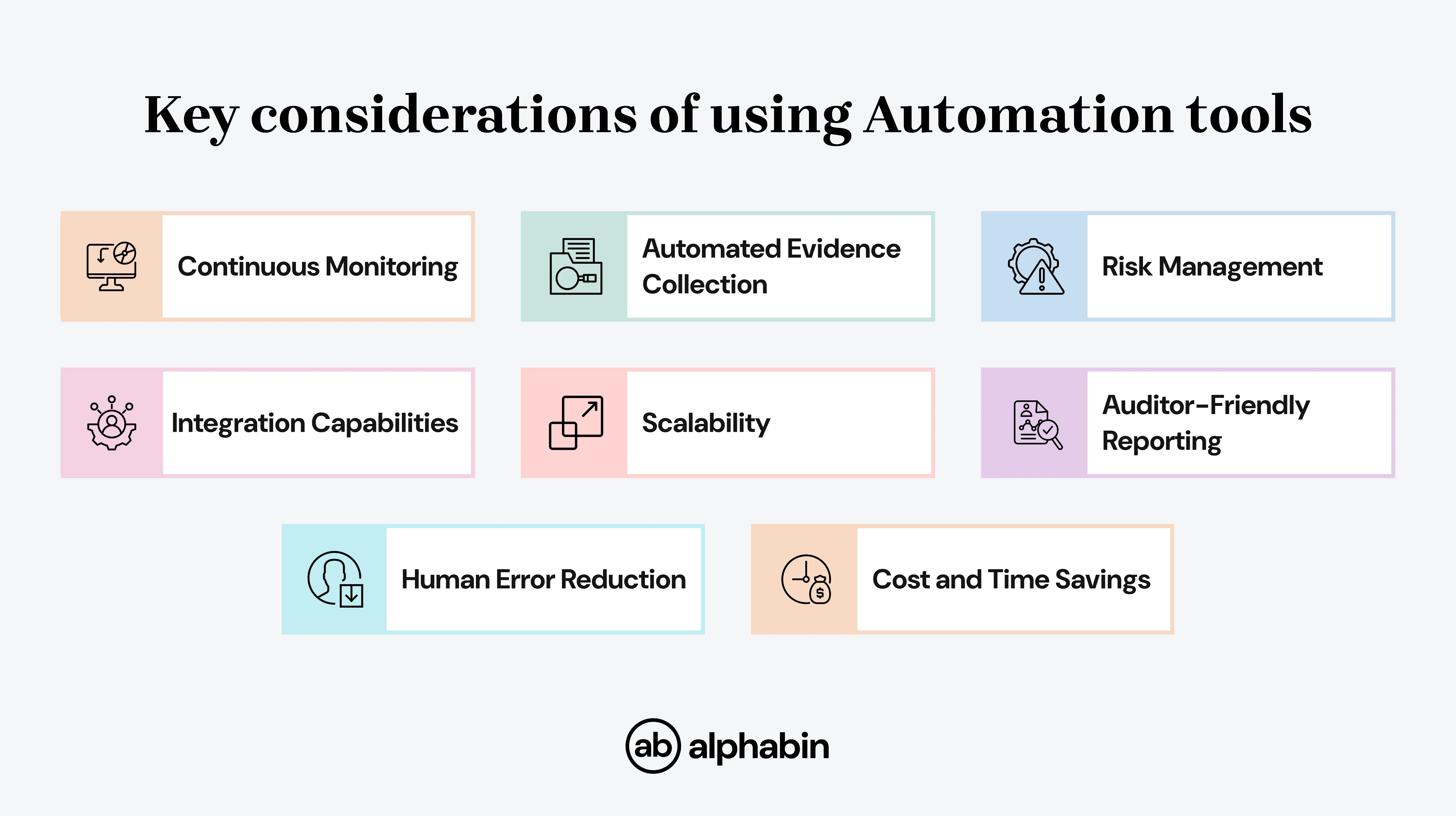At 3 AM, Sarah, the CTO of a rapidly growing fintech startup, was looking at SOC 2 compliance requirements scattered all across her desk.
Her team had been managing tracking controls manually for months, and with the company's first SOC 2 audit only weeks away, she wondered, "Wouldn't it have been better if we had invested in an SOC 2 tool?"
This is a story that unfolds in countless companies every year. With the average SOC 2 compliance costs rising, the decision between internally developing processes or utilizing specialized tools can significantly impact your compliance journey.
Whether you are a startup trying to secure your first enterprise client or an established organization looking to enhance your security posture, it's essential to weigh the pros and cons to ensure you make informed decisions.
Here’s the breakdown: this blog will guide you to understand both the approaches, and by the end, you’ll have the clarity to ensure what to choose between SOC 2 DIY and using a tool.
What is DIY SOC 2 Compliance?
Whether you take a DIY Audit approach or use compliance automation tools, you have several options for conducting a SOC 2 audit.
DIY (Do-it-yourself) SOC 2 means developing the entire compliance process internally without the use of specialized compliance automation software.
The team creates policies, tracks controls, collects evidence, and manages the audit controls manually. Depending on your specific needs, your review of controls and processes may require the use of spreadsheets, email, and file storage systems.
You may be required to rely on your internal teams to know and understand SOC 2 requirements and create new processes for the compliance audit and build everything from the ground up.
In essence, you are the compliance management system and act as if you had specialized compliance software, doing everything from risk assessments to continuous monitoring.
{{cta-image}}
Who typically chooses the DIY approach?
- A service organization, rather than an individual, utilizes the 'DIY SOC 2 approach.' In which the companies providing services to other businesses (such as SaaS companies or cloud providers) decide to pursue DIY SOC 2 compliance. They implement controls themselves rather than hiring consultants or contracting a managed service.
- Early-stage startups utilize a DIY way of completing SOC 2 when budgets are tight and when the only member of the technical team available to do it has the bandwidth for a SOC 2. Generally, smaller teams have limited compliance to monitor and are less technical, making it easier to manually keep track of at the start.
- Organizations with strong compliance expertise internally are more likely to take a DIY approach. Organizations where security professionals have been security professionals, or where they passed SOP 2 before, are less likely to feel they need to purchase tools or vendors to manage SOC 2 through an outsourced approach.
{{blog-cta-1}}
Why Do Teams Opt for DIY SOC 2?
There are multiple reasons why teams may choose the Do It Yourself (DIY) approach to SOC 2 compliance; costs can be less, teams believe they have more control over the process, and the potential for internal capacity building.
However, teams should weigh the potential advantages against the difficulties of navigating the complex SOC 2 requirements without professional help.
Benefits of Using DIY Approach
- Cost Savings: Avoiding the cost of hiring a consultant or purchasing a software solution can be a legitimate cost savings, even more so for startups or smaller organizations with limited budgets.
- More Control & Ownership: Teams may choose to guide the entire process themselves because they expect to have a better understanding of their systems and controls compared to an external expert.
- Building Internal Knowledge: Prioritizing a DIY approach provides teams with an opportunity to create internal knowledge regarding SOC 2 compliance and information security knowledge.
- Faster Execution: Depending on the team's comfort level with the requirements and existing controls, they may be able to conduct a DIY assessment and see it as a quicker initiative than when working with a consultant or software.
Key considerations of using Automation tools

SOC 2 Approaches: DIY vs Using a Tool
When it comes to SOC 2 compliance, organizations either go for a DIY approach or use a special tool.
The DIY approach means that the organization manages the entire SOC2 compliance process all on its own. The tool, on the other hand, automates some portions of SOC2 compliance and streamlines many of the processes.
There are advantages and disadvantages to both methods, and which way to go will depend on the organization's budget, resource availability, and how complex the organization's systems are.
A Quick Comparison
Pros and cons
Which One Should You Choose?
Your approach will depend on your company's size, growth stage, expertise, and resources. To clarify:
The DIY approach is most appropriate when:
- You are at the startup stage with a limited budget
- You have a small team and a few controls to monitor
- You have in-house compliance or security experience
- You want to have total control over your SOC 2 process.
- You are comfortable manually managing documentation, evidence collection, and audits.
A tool or platform is most appropriate when:
- You are scaling quickly and need to make compliance efficient at scale
- You want to automate evidence collection, testing, and reporting
- You do not have anyone on your team with dedicated security or compliance expertise
- You want to save time, reduce human errors, and become audit-ready with less stress.
{{cta-image-second}}
Low-complexity startups may initially go the DIY route, but as they scale their company or prepare for enterprise deals, a social compliance engine can get them there faster, smarter, and with audit trails.
Conclusion
So you might be wondering: should I DIY my SOC 2 or use a tool to get compliant?
Whereas DIY can give you control and save money in the short run, a tool-based approach provides further efficiencies and less risk, as well as a faster route to compliance.
Finally, do not forget that the best method is which helps you pass your audit and simultaneously build a culture of sustainability for tomorrow.
Whether do-it-yourself or tool-based, we want to be a compliance culture that is driven by security and not 'check the box’ when it comes to complying.
FAQs
1. Can I switch from a DIY to a tool mid-process?
Yes, but it is better to decide early—switching late may require some rework and can create delays.
2. What is the minimum team size for effective DIY SOC 2?
At a minimum, you want at least one part-time expert (20+ hrs/week) plus support from IT, HR, and leadership. Very small teams may struggle.
3. How long does DIY SOC 2 take compared to using a tool?
DIY takes anywhere from 6 to 12 months; using a tool can shorten it to 2 to 6 months, depending on the size of the team and readiness.
4. Do compliance tools guarantee a successful audit?
No. Tools can help you automate and organize, but the successful outcome of the audit ultimately comes down to your policies, practices, and execution by your team.



.svg)









.png)
